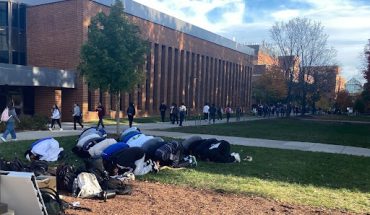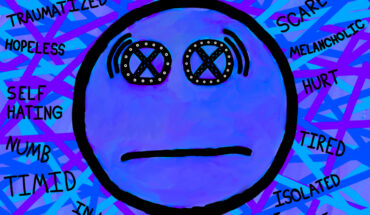Mason student reflects on the hardships after Irma and Maria hit her home
By Lauren Sullivan, Staff Writer
Melting ice caps and disappearing forests are common visualizations of climate change, but mental health issues can be a direct cause of climate change as well.
The Center for Climate Change Communication, or 4C, partners with doctors as part of the Medical Society Consortium on Climate and Health to publish information packets with the top ways climate change threatens Americans health. One is mental health and wellbeing.
According to 4C, “Many people exposed to the worst extreme weather events experience stress and serious mental-health consequences including depression, anxiety, post-traumatic stress disorder and increases in suicidal thoughts and behavior.”
Increases in hurricane frequency and intensity began in the 1980s, according to the National Climate Assessment. The increase is linked to human-induced emissions of heat-trapping gas and pollution, which warms the Earth and raises the sea-surface level. Increased ocean-surface temperatures allow hurricanes to form more quickly, move through the ocean more easily and increase their intensity.
Hurricane Harvey caused extensive damage along the east coast of Texas in August 2017, while Hurricane Irma and Hurricane Maria destroyed much of Puerto Rico and the U.S. Virgin Islands from August to October of 2017.
These storms destroyed towns, displaced families and caused many businesses to close. Mason senior Shernelle Rey knows the trauma and mental-health impacts hurricanes cause well.
Rey’s family lives in the U.S. Virgin Islands, where Hurricane Irma and then Hurricane Maria hit back-to-back. “The locals nicknamed the storm ‘Hurricane IrMaria,’” said Rey. She returned to Mason before the hurricanes hit, but she felt the negative impacts even in Virginia.
“This storm was so hard for me because I wasn’t able to be in contact with my family,” said Rey, “I had a lot of anxiety and was extremely emotional.” The intense rain and strong wind destroyed the island and Rey had no way to contact her family.
“The hardest part was knowing that my family was split up into different areas on the island and not being able to call and see if everyone was okay,” said Rey, “It was hard to see all the videos on Facebook of all the people struggling, losing their homes and being put in dangerous situations, especially since I didn’t know how my family was doing.”
Irma and Maria hit at the beginning of Rey’s senior year, as well as during her 21 birthday. “I felt helpless and it was hard trying to concentrate on other things like school, my job and my birthday when I had no idea if my family was safe or not,” said Rey.
Rey waited anxiously in Virginia for good news while her family experienced the physical impacts of the hurricane. Her elderly grandma was alone in her apartment when the eye of the storm hit.
While her doors and windows broke in and caused debris to fly, her grandma barricaded herself in her bathroom and held the door closed with her own strength. “Knowing my grandma can’t really walk that well I was surprised she was able to hold the door closed with her body,” said Rey.
Irma and Maria destroyed homes and left the island without electricity – both Rey’s family home and her grandma’s apartment became unlivable due to debris and flooding. Rey and her family still feel the emotional impact of the storms today.
“When I go home, I think back to what home used to look and feel like and now it feels so unfamiliar since the storm,” said Rey, “I also can’t go back for job opportunities because they are so limited now.”
A common reality for those impacted by storms is losing the feeling of “home” and having no job opportunities. These feelings lead to the increases in mental-health disorders like 4C found.
The National Oceanic and Atmospheric Administration found similar increases in mental-health disorders, saying, “extreme weather events can create increased anxiety and emotional stress about the future, with the most severe impacts being felt by individuals who were already disadvantaged prior to the event.”
Daniela Vianna, a visiting researcher for 4C, said, “If countries do not lower their output of carbon emissions, we will reach our budget by 2030 and that will cause even more natural disasters.”
According to Vianna, the only way to stop the onset of more natural disasters is to lessen the amount of carbon all countries release to below 40 gigatonnes of carbon per year. “It is happening now, here and with us,” Vianna said, “We can change the course of our ecological Titanic.”
Photo Courtesy of Shernelle Rey




